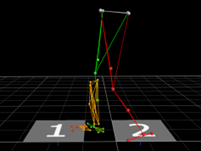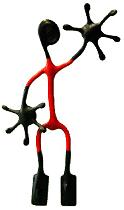Effects on spatiotemporal and kinematic parameters after surgical intervention in patients with an equinovarus foot deformity following stroke

Background and aim
Equinovarus is the most frequently (10-20 %) seen foot deformity in the affected leg after stroke. The equinovarus foot affects all phases of the gait cycle. Initial contact occurs at other foot regions than the heel, during the stance phase the ankle stability and dorsiflexion reduces, and in swing phase the foot clearance is decreased. Consequently, equinovarus severely compromises walking capacity, increases the risk of falling and is often results in the need of a walking aid or orthotic device. Surgical correction of the equinovarus foot deformity shows promising results in improving walking ability. However, at present it is not clear which patients benefit from the surgical intervention and little is known about the effects on walking performance.
To study the effects of the surgical intervention, in this case the Split Anterior tibial Tendon Transfer procedure (SPLATT), 16 subjects have currently undergone this SPLATT procedure within this study. Both pre and post surgery a full 3D gait analysis, including use of a detailed foot model and measurement of muscle activity, has been performed in 11 of the subjects included in the study.
Your assignment
The main objective of the assignment is to explore the effects of the soft tissue surgery on the equinovarus foot deformity in post stroke subjects in terms of foot function, expressed in spatio-temporal and kinematic parameters.
The assignment will include:
- (Post-)processing and analysis of 3D measurement data (VICON) – marker identification, application of a biomechanical model
- Development and possible adaptation of analysis scripts (VICON BodyBuilder, Matlab, Python)
- Statistical analysis
Possible Projects
BSc Scientific Internship; BSc or MSc thesis; Voluntary work experience
What else do you need to know?
This assignment is to be executed at Roessingh Research and Development (RRD), Enschede, The Netherlands. When preferred, certain parts of the assignment can also be done remotely.
Contact
You can contact L. Schaake (l.schaake@rrd.nl) or E. Prinsen (e.prinsen@rrd.nl) for more information on the assignment.


